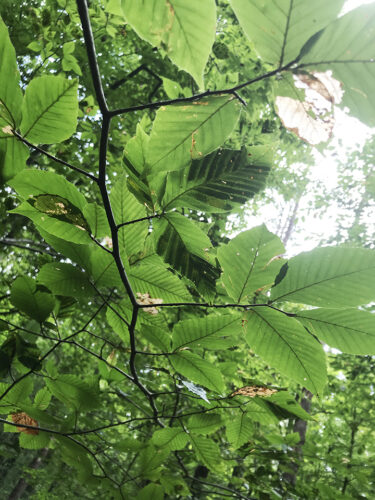
From Our Sponsors and Partners – Fall 2025
From the Virginia Institute of Marine Science Center for Coastal Resources Management: New Sea Level Rise Report Cards
The 2024 edition of the annual sea level report cards was recently released by CCRM with a new interactive dashboard. Sea level trends for 36 coastal communities around the nation were analyzed for rates of rise and acceleration along with forecasts for 2050 water levels. A new tide gauge station was added in 2024 in Yorktown, VA. These annual report cards are created using tide gauge data from the past 55 years. View the Sea Level Rise Report Cards
From the Virginia Department of Wildlife Resources: Virginia’s Second Breeding Bird Atlas
After more than a decade of work including planning, data collection, review, analysis, and content production, the Second Breeding Bird Atlas has been published! The Atlas is the product of a partnership between DWR, the Virginia Society of Ornithology and the Conservation Management Institute at Virginia Tech. A legion of over 1,400 citizen science volunteers (including many Virginia Master Naturalist volunteers) across the Commonwealth contributed an approximate 80,000 survey hours in the field, making the Atlas one of Virginia’s largest citizen science project to date.
This website is being rolled out in two phases. This first phase, available now, includes background information about the project, 203 species accounts with beautiful photos taken here in Virginia, a guide to interpreting the accounts, an acknowledgement section to highlight the 1,500+ individuals and organizations who contributed to the Atlas project, a description of the Atlas Methods, and a “first peek” into a deeper analysis of Atlas results.
The second phase will launch in early 2026 and will include more technical information on data modeling, Atlas coverage, and tables that show the timing of breeding behaviors across species, as well as more information on bird conservation. The conservation sections will highlight the various habitats within Virginia, threats that Virginia breeding bird populations face, and guidance on actions that can be undertaken to support Virginia’s birds.
Check it out and let us know what you think using the ‘Contact Us Form’.
We’ll be sharing additional information about the Second Breeding Bird Atlas in our winter newsletter edition!
Two Disease/Invasive Species Updates
Quarantine Zone for Imported Fire Ants Expanded
From the VDACS website: On May 27, 2025, the Virginia Department of Agriculture and Consumer Services (VDACS) expanded the areas regulated for imported fire ant in the Virginia Imported Fire Ant Quarantine for Enforcement of the Virginia Pest Law (Quarantine) to include the counties of Chesterfield, Lee, Nottoway, Pittsylvania, Prince George, and Surry and the independent cities of Colonial Heights, Danville, Hopewell, and Petersburg.
In 1989, the first imported fire ant infestation was detected in the Commonwealth of Virginia. To date, all imported fire ant infestations appear to have been introduced into Virginia on nursery stock or other plant products from infested areas or by natural spread from nearby infested areas. With assistance from the U.S. Department of Agriculture, the VDACS Office of Plant Industry Services attempts to eradicate each fire ant occurrence outside of the regulated area. However, when the imported fire ant is established in an area, the infested localities are then included in the Quarantine and VDACS will no longer treat infestations within the quarantined area, concentrating instead on new infestations that may appear outside the quarantine area.
In 2009, a Quarantine was established in Virginia and included much of southeast Virginia. Since that time, the imported fire ant has spread and the Quarantine expanded in 2019, again in 2022, and most recently in 2025. The quarantine now covers 18 counties and 15 independent cities across the state.
Imported fire ant mounds are typically found in warm, sunny locations such as landscape beds, lawns, around trees and shrubs, along sidewalk cracks and against buildings. If disturbed, these ants are generally aggressive and can inflict painful stings.
If you suspect a fire ant infestation within the quarantine area, please use caution and contact your local Virginia Cooperative Extension office for treatment recommendations. If you suspect a fire ant infestation outside of the quarantine area, please report the sighting to VDACS using the Invasive Species Reporting Tool.
Beech Leaf Disease Expansion
Beech Leaf Disease has greatly expanded across Virginia recently. It was first found in the state in Prince William County in 2020 and has stayed relatively close to that until this year. View the current map of confirmed locations in Virginia. Learn more about beech leaf disease and how VMN volunteers can help monitor for it statewide from our June webinar recording.
